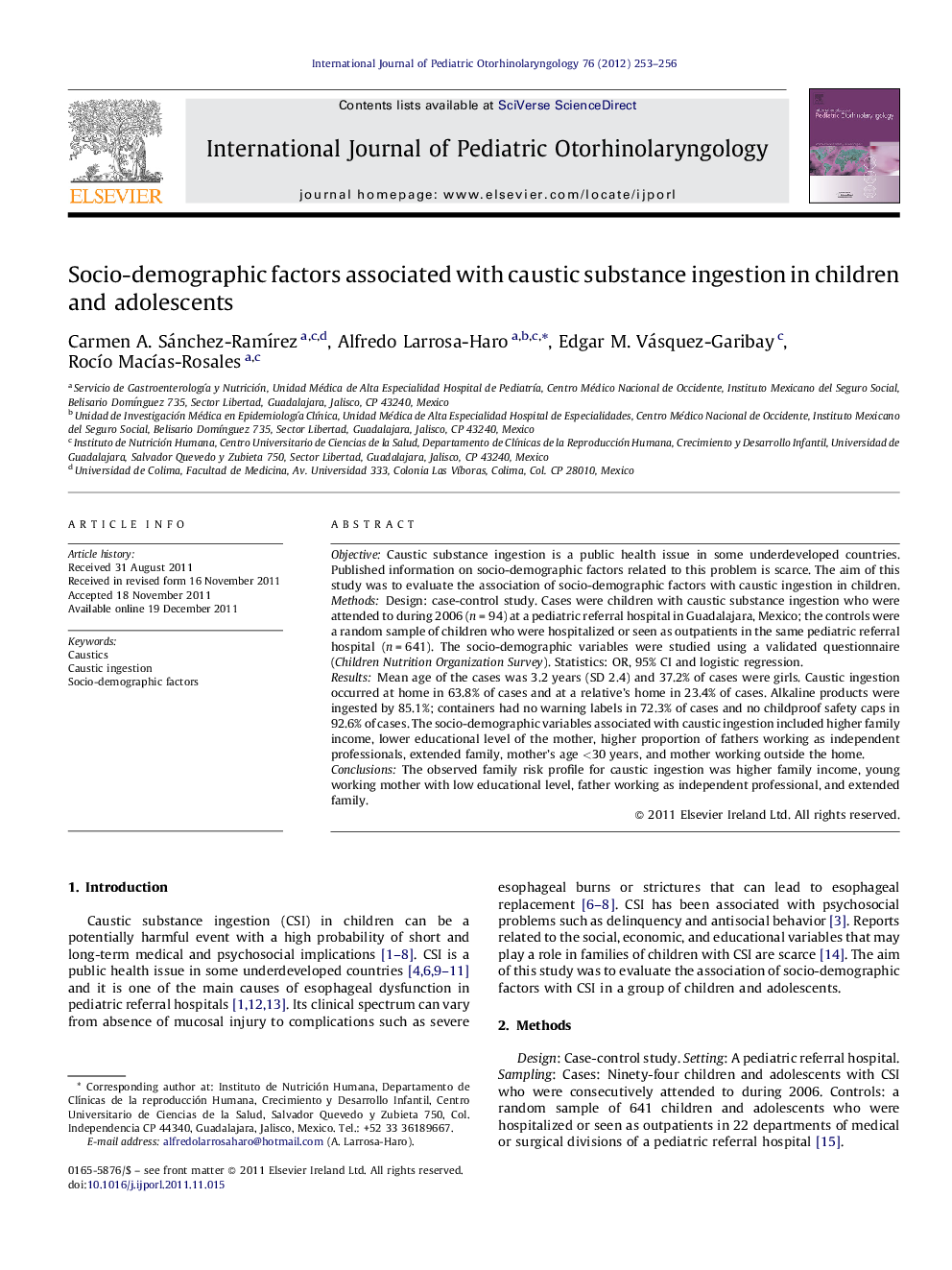| Article ID | Journal | Published Year | Pages | File Type |
|---|---|---|---|---|
| 4113121 | International Journal of Pediatric Otorhinolaryngology | 2012 | 4 Pages |
ObjectiveCaustic substance ingestion is a public health issue in some underdeveloped countries. Published information on socio-demographic factors related to this problem is scarce. The aim of this study was to evaluate the association of socio-demographic factors with caustic ingestion in children.MethodsDesign: case-control study. Cases were children with caustic substance ingestion who were attended to during 2006 (n = 94) at a pediatric referral hospital in Guadalajara, Mexico; the controls were a random sample of children who were hospitalized or seen as outpatients in the same pediatric referral hospital (n = 641). The socio-demographic variables were studied using a validated questionnaire (Children Nutrition Organization Survey). Statistics: OR, 95% CI and logistic regression.ResultsMean age of the cases was 3.2 years (SD 2.4) and 37.2% of cases were girls. Caustic ingestion occurred at home in 63.8% of cases and at a relative's home in 23.4% of cases. Alkaline products were ingested by 85.1%; containers had no warning labels in 72.3% of cases and no childproof safety caps in 92.6% of cases. The socio-demographic variables associated with caustic ingestion included higher family income, lower educational level of the mother, higher proportion of fathers working as independent professionals, extended family, mother's age <30 years, and mother working outside the home.ConclusionsThe observed family risk profile for caustic ingestion was higher family income, young working mother with low educational level, father working as independent professional, and extended family.
